Describing Sounds Using Sound Words
Hello! Do you have any advice/resources on how to write sounds? Speaking and singing in particular but also maybe sounds at different volumes and sounds that could be considered "noise."
Describing Sounds Using Sound Words
Description of sound is all about knowing sound-related vocabulary. Here's a mini-list to get you started, but you can do some research to learn more. Also, be sure to look up these words before using them to make sure they're right for the context.
High Volume - blaring, blasting, booming, bray, din, deafening, ear-piercing, ear-popping, earsplitting, full volume, loud, pealing, roaring, sonorous, thundering, thunderous
Low Volume - buzz, faint, gentle, hushed, low, muffled, murmur, muted, peaceful, quiet, soft, subdued, whisper
Noise - cacophony, clamor, clatter, commotion, discord, disquiet, fracas, hullabaloo, racket, ruckus, uproar Pitch and Tone - atonal, discordant, dulcet, harmonic, harsh, high-frequency, low-frequency, mellow, resonant, sonic, soprano, tenor, timbre
Rhythm - beat, cadence, flow, lilt, lyrical, measured, melodic, metered, monotone, pulsing, staccato, stutter, tempo
Sounds - babble, bang, bark, beep, belch, boom, burble, burp, chirr, chirp, clack, clatter, clang, clank, click, clink, clip-clop, clomp, crackle, crash, creak, ding, echo, groan, gurgle, hiss, hoot, hum, jangle, jingle, kerplunk, howl, melodic, mewl, moan, murmur, patter, pitter-patter, peal, plop, pop, purr, rattle, roar, rumble, rustle, screech, shriek, sizzle, splash, splat, swoosh, squawk, squeak, strum, thud, thrum, thump, wail, whimper, whinny, whine, whir, whistle, whiz, yelp, yowl, zing How to Research Sounds - If you're struggling to describe the sound of a particular thing, like "thunder," go to Google and type in, "how to describe the sound of thunder" and look for inspiration. You can also search for things like "horse sounds" or "what sounds do cars make?"
Also, two previous posts specific to describing the sound of singing and music:
Describing Music How to Describe a Singing Voice
I hope that helps!
•••••••••••••••••••••••••••••••••
I’ve been writing seriously for over 30 years and love to share what I’ve learned. Have a writing question? My inbox is always open!
Learn more about WQA
Visit my Master List of Top Posts
Go to ko-fi.com/wqa to buy me coffee or see my commissions
More Posts from Gatortavern and Others
more medical tips to help with writing? more medical tips in general? yummy. please send more
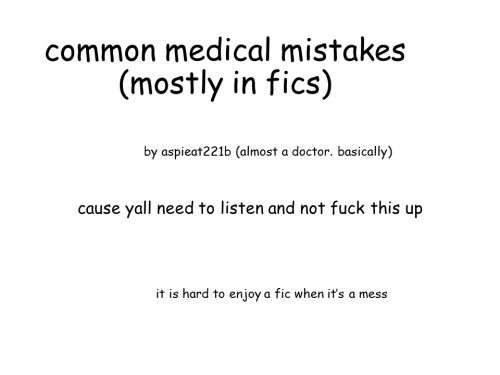
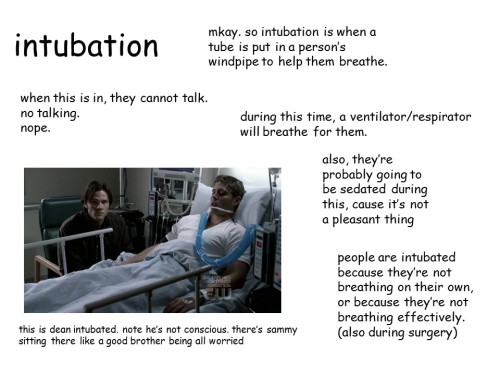
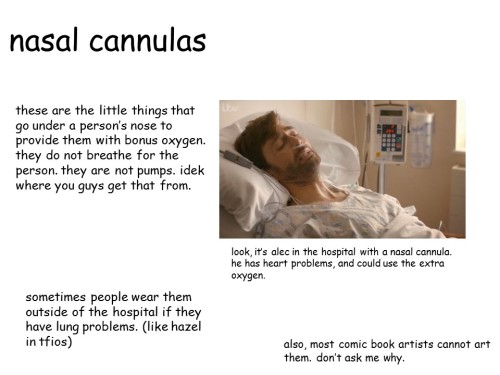
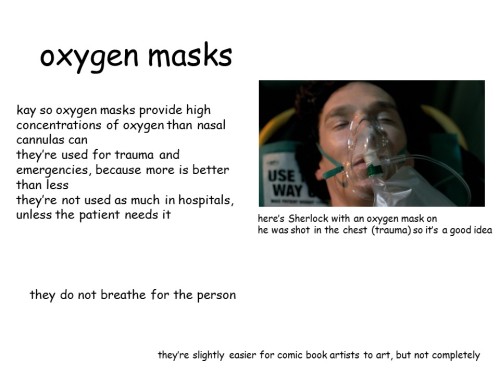



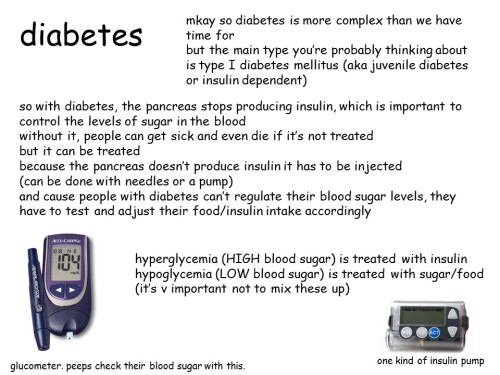
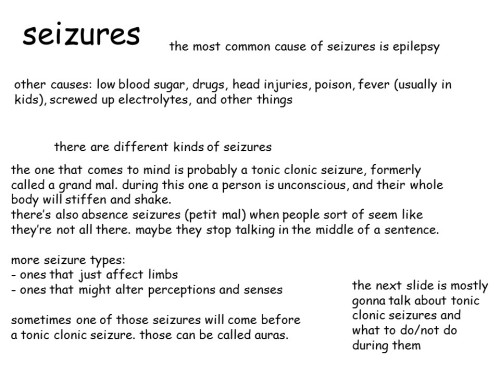
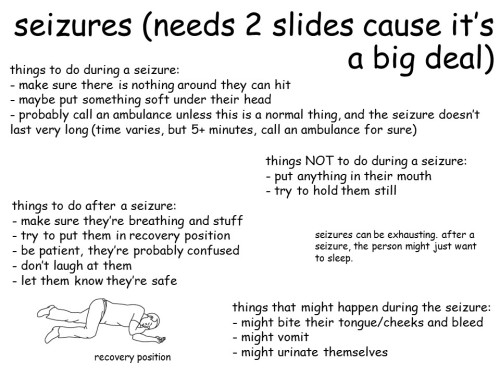
So I’ve noticed a bunch of medical errors in fics I read, so I decided to post this handy guide to some of the most common errors and some background on basic medical things.
ps- they are not medical treatment or first aid advice. I’m not actually a doctor. yet. but I am certified in first aid. this is just so your writing can be more realistic.
Hello! This is my first time asking but I could I have some advice on how to write a story that starts in the climax of the plot already? The context is my MC woke up and they are not able to remember anything, but suddenly, he just woke up in the wards of his family (a very strong political figure in their world might I add) whom he told what his life was but the narratives they are telling does not match even in the slightest of the flashback that's plaguing him as the time stretches. And they were in the middle of the war, too. I'm having a hard time to achieve that mind-blowing... thrill I suppose? They also got a love interest that is unmistakably not the one his family claimed ‘their-spouse’ to be.
Starting with Inciting Incident
Remember: your story's climax is the moment your character faces off against the antagonist once and for all. While some stories do start at the climax, and then flashback to the beginning of the story to build back up to it, it doesn't mean you start at the climax and move forward from there.
I think there can be a lot of confusion with the concept of "In Media Res" which a lot of people confuse as meaning starting in the literal middle of the story, or at the inciting incident or climax. Instead, "in media res" simply means starting in the middle of the action. That action can be the inciting incident, the climax, or the literal middle, but again, it doesn't mean the story moves forward from there.
If you're starting your story at the point where your character wakes up without their memories, this isn't the climax but rather the inciting incident. This is the moment when their life and world are turned upside down. Starting at this moment in a story about memory loss is a great way to go, because your reader knows as little about the character and their world as the character does. It puts the reader in your character's shoes right from the start, and they'll be learning everything right alongside your character.
So, that's really the key is to make sure you're filling in the gaps left by not having an exposition. You'll need to make sure to fairly quickly illustrate this character's natural personality, the world they've woken up into, and what their life was apparently like before they lost their memories. If they're being lied to, you may want to build in some clues that hint at what their actual life was like--such as feeling a place is familiar to them even if they're told "no, you would never have been to such a place."
As far as creating that thrill in that opening moment, it's really going to come down to emotional and sensory description. In lieu of recognizing who they are, where they are, and what happened to them, they're going to focus on their immediate surroundings. What can they see, hear, smell, taste, feel? What does that sensory input tell them about who they are and where they are? How does that sensory input--and what they can learn from it--make them feel? What emotions are they feeling as they process this unfamiliar environment and realize they have no idea who they are, where they are, or what happened to them?
I hope that helps!
•••••••••••••••••••••••••••••••••
I’ve been writing seriously for over 30 years and love to share what I’ve learned. Have a writing question? My inbox is always open!
LEARN MORE about WQA
SEE MY ask policies
VISIT MY Master List of Top Posts
COFFEE & COMMISSIONS ko-fi.com/wqa
#lizard #Komodo Dragon





Komodo Dragon. Indonesian Islands of Komodo,Rinca,Flores and Gili Motang.1 of 3 venomous lizards on Earth.
An excellent way to help others and progress research at the same time!
Want to contribute to citizen science projects?
Yeah? Then have I got a list for you!
Places to find citizen science projects:
NASA’s Citizen Science section – NASA maintains a page here with links to all their citizen science projects and initiatives—and they have a LOT. All projects are helpfully color-coded by category/domain.
Zooniverse – Very good website, LOTS of projects. “The world’s largest and most popular platform for people-powered research”.
SciStarter – Another good hub for finding projects. SO, SO many projects available!
A list of citizen science projects that have you playing games
Wikipedia
National Geographic – Nat Geo always maintains a list here of a lot of good ones.
This list on Gizmodo that I LOVE, 10/10
Society for Science – Not only do they have a lot of great citizen science projects linked, they also have sections to help you start your own citizen science projects too.
Smithsonian Institution – Come on, who DOESN’T want to help out the SMITHSONIAN?
Citizen science projects with iPhone apps:
iNaturalist – Take pictures of plants, fungi, animals, insects, etc. around you and contribute to scientific data repositories for researchers!
budburst – Help scientists find and monitor plants in your area and improve their research on plant conservation!
eBird – If you love birding or just want to contribute to research on bird populations and migrations, this is the project for you!
Spotteron – There are a LOT of apps for a variety of ongoing projects here, both at global and regional levels.
Globe Observer – Help NASA by providing data from down here on Earth!
Insight – Give scientists data they can use to help understand and save pollinators by snapping pics and tracking ones near you in observations!
River Survey/Ocean Survey apps – The Ocean Cleanup has put out two different apps for helping track the pollution in our water! River Survey asks citizens to help by going to a nearby river and starting to count the plastic they see. Ocean Survey asks anyone who goes out on the ocean to record any plastic debris they spot floating on the ocean.
Have fun, be safe, and happy researching!
I love them. Such a goofy dude.

Another sketch brought to you by #Paleostream
Brachiosuchus, a dyrosaurid from the late cretaceous of Sudan. Dyrosaurids are in general already weird crocodilians but Brachiosuchus is extra bizarre because of it's very long arms, that are quite a bit longer than it's hindlimbs. it also has a skull the size of it's torso and tall neural spines.
we're sleeping on how varied crocodilians are in colour and pattern
Yacare caiman

Tomistoma

Cuban crocodile

Cuvier's dwarf caiman

West African crocodile

American alligator

Saltwater crocodile

New Guinea crocodile

How to Make Your Descriptions Less Boring
We’ve all been warned about the dangers of using too much description. Readers don’t want to read three paragraphs about a sunset, we’re told. Description slows down a story; it’s boring and self-indulgent. You should keep your description as short and simple as possible. For those who take a more scientific approach to writing fiction, arbitrary rules abound: One sentence per paragraph. One paragraph per page. And, for god’s sake, “Never open a book with weather” (Elmore Leonard).
But what this conventional wedding wisdom fails to take into account is the difference between static and dynamic description. Static description is usually boring. It exists almost like a painted backdrop to a play. As the name suggests, it doesn’t move, doesn’t interact or get interacted with.
There were clouds in the sky. Her hair was red with hints of orange. The house had brown carpeting and yellow countertops.
In moderation, there’s nothing wrong with static description. Sometimes, facts are facts, and you need to communicate them to the reader in a straightforward manner.
But too much static description, and readers will start to skim forward. They don’t want to read about what the house looks like or the stormy weather or the hair color of each of your protagonist’s seventeen cousins.
Why? Because they can tell it’s not important. They can afford to skip all of your description because their understanding of the story will not be impacted.
That’s where dynamic description comes in. Dynamic description is a living entity. It’s interactive, it’s relevant. It takes on the voices of your narrators and characters. In short, it gives us important information about the story, and it can’t be skimmed over.
So how do you make your description more dynamic so that it engages your readers and adds color and excitement to your story? Here are a few tips.
(I have a TON more tips about setting and description. These are just a few. But I’m trying to keep this short, so if you have any questions or want more advice about this, please feel free to ask me.)
Keep reading
technically gator related, these pictures are just adorable.
The artist is esasi8794 / Twitter



Growing up with your starters
Artist: esasi8794 / Twitter
Some of these are inviting, in their own odd way. Some of these faces seem as if the person is turning to you with the words "can you believe what's going on here?" about to leave their lips. The gentleman staring gives off a "sitting on the subway train longingly gazing out the window, thinking of love" vibe.
I fucking hate James Tissot’s paintings because in ALL OF THEM there is ALWAYS someone staring right at you, but it’s not always immediately visible. You just feel watched by this mf. Sometimes the little shit is right there at the centre, but others the bastard is just gazing from the distance, it is CREEPY, my guys
ok ive actually been wanting to ask this for a while; can getting stabbed in the stomach/abdomen really cause blood to come out of the mouth or is that just a dumb trope for The Drama?
Yes, but also, yes.
There are a lot of injuries that can result in blood in your respiratory system. The most obvious would be puncturing a lung, or bruising a lung (called a pulmonary contusion.) Also, bleeding from the sinuses that gets into the throat can result in coughing up blood (though this one is pretty benign.) As a general rule, you do not want fluid in your lungs at all, and fluid that is prone to coagulating, blocking your lungs' ability to absorb oxygen is a very bad thing.
And it gets worse, for your body to effectively expel a large glob of blood, the way you usually see in films, you would need a lot of blood in your lungs. On their own, even relatively minor pulmonary contusions have a pretty significant mortality rate. What this means is, if you're ever coughing up blood, there's about a 30% chance you're going to die.
Also as a quick aside, particularly violent coughing can result in some minor spotting from broken blood vessels. It's not inherently life threatening, but it is something that should be checked out quickly, because it can be a symptom of something worse. (Such as lung cancer.)
The way these injuries tend to get inflicted is a mixed bag. When someone's been getting beaten (particularly in the upper torso), they've been in an explosion, or a car accident, then it's not that unreasonable for them to be coughing up blood. A pulmonary contusion is a pretty plausible injury in those circumstances. And again, that pulmonary contusion could easily end up being the fatal injury.
When a character has been shot or stabbed in the stomach, then it's less plausible. There's a bit of a distinction here, because if you have serious hemorrhaging from internal injuries and that gets into your stomach, it's quite possible you'd vomit blood. You don't see this very often in film, coughing is far more popular, and in a lot of cases, you'll see characters coughing up blood when they should be vomiting. As with pulmonary contusions, this is not a symptom to screw around with, if someone's vomiting blood, they're at very serious risk of dying, and need immediate medical care.
So, is it just used for drama? Yeah. It is. Stage coughing is pretty easy for an actor, and a little bit of slight of hand with a blood pack can let them get a nice death scene in. It's not about the realism of the injury, and in most cases, aside from coughing up blood, they're not exhibiting any of the other associated symptoms (including the ones that are more common.) When someone's coughing up blood like this, they're also suffocating, because their lung can't absorb oxygen out of the air. As a result, they'll frequently start hyperventilating. Which, you'll never see in one of these scenes. The actor will lay there, deliver their lines, feign pain, and then spit up a red dye pack and relax. Which, that's not how this injury works at all.
So, yes, it is a real injury, but also, yes, this is something that is used for dramatic effect and not out of any interest in realism.
-Starke
This blog is supported through Patreon. Patrons get access to new posts three days early, and direct access to us through Discord. If you're already a Patron, thank you. If you’d like to support us, please consider becoming a Patron.
-
 kiwivlider reblogged this · 7 months ago
kiwivlider reblogged this · 7 months ago -
 kiwivlider liked this · 7 months ago
kiwivlider liked this · 7 months ago -
 artsyrenaissancegirl reblogged this · 8 months ago
artsyrenaissancegirl reblogged this · 8 months ago -
 artsyrenaissancegirl liked this · 8 months ago
artsyrenaissancegirl liked this · 8 months ago -
 kaleidoscopeking liked this · 10 months ago
kaleidoscopeking liked this · 10 months ago -
 bearchuckles reblogged this · 11 months ago
bearchuckles reblogged this · 11 months ago -
 existwound-moved liked this · 1 year ago
existwound-moved liked this · 1 year ago -
 maca-666 liked this · 1 year ago
maca-666 liked this · 1 year ago -
 uttervulgarity liked this · 1 year ago
uttervulgarity liked this · 1 year ago -
 heckcareoxytwit liked this · 1 year ago
heckcareoxytwit liked this · 1 year ago -
 septic-dr-schneep liked this · 1 year ago
septic-dr-schneep liked this · 1 year ago -
 the-new-realtekcreeper reblogged this · 1 year ago
the-new-realtekcreeper reblogged this · 1 year ago -
 public-wifi-ip reblogged this · 1 year ago
public-wifi-ip reblogged this · 1 year ago -
 public-wifi-ip liked this · 1 year ago
public-wifi-ip liked this · 1 year ago -
 volcanicpizza reblogged this · 1 year ago
volcanicpizza reblogged this · 1 year ago -
 macbow333 liked this · 1 year ago
macbow333 liked this · 1 year ago -
 cloudbatcave reblogged this · 1 year ago
cloudbatcave reblogged this · 1 year ago -
 anonymouscreampuff liked this · 1 year ago
anonymouscreampuff liked this · 1 year ago -
 belfrygargoyles liked this · 1 year ago
belfrygargoyles liked this · 1 year ago -
 pinkcourt reblogged this · 1 year ago
pinkcourt reblogged this · 1 year ago -
 pyralart liked this · 1 year ago
pyralart liked this · 1 year ago -
 t-375-150 reblogged this · 1 year ago
t-375-150 reblogged this · 1 year ago -
 t-375-150 liked this · 1 year ago
t-375-150 liked this · 1 year ago -
 soepwashere liked this · 1 year ago
soepwashere liked this · 1 year ago -
 boosrefblog reblogged this · 1 year ago
boosrefblog reblogged this · 1 year ago -
 sexylinoleum liked this · 1 year ago
sexylinoleum liked this · 1 year ago -
 tobyfoxmademeascaly reblogged this · 1 year ago
tobyfoxmademeascaly reblogged this · 1 year ago -
 humankk reblogged this · 1 year ago
humankk reblogged this · 1 year ago -
 humankk liked this · 1 year ago
humankk liked this · 1 year ago -
 determination-saved reblogged this · 1 year ago
determination-saved reblogged this · 1 year ago -
 determination-saved liked this · 1 year ago
determination-saved liked this · 1 year ago -
 justmenoworries reblogged this · 1 year ago
justmenoworries reblogged this · 1 year ago -
 justmenoworries liked this · 1 year ago
justmenoworries liked this · 1 year ago -
 clevercatchphrase reblogged this · 1 year ago
clevercatchphrase reblogged this · 1 year ago -
 jesse-wilder reblogged this · 1 year ago
jesse-wilder reblogged this · 1 year ago -
 sy5starplaty liked this · 1 year ago
sy5starplaty liked this · 1 year ago -
 skelly-dwerp liked this · 1 year ago
skelly-dwerp liked this · 1 year ago -
 autistic-gay-demon liked this · 1 year ago
autistic-gay-demon liked this · 1 year ago -
 sinmenon reblogged this · 1 year ago
sinmenon reblogged this · 1 year ago -
 me-png liked this · 1 year ago
me-png liked this · 1 year ago -
 thekelpiekid liked this · 1 year ago
thekelpiekid liked this · 1 year ago -
 trying2write reblogged this · 1 year ago
trying2write reblogged this · 1 year ago -
 trying2write liked this · 1 year ago
trying2write liked this · 1 year ago -
 ravenkinnie reblogged this · 1 year ago
ravenkinnie reblogged this · 1 year ago -
 bunbunmarunewspaper liked this · 1 year ago
bunbunmarunewspaper liked this · 1 year ago -
 legobandit reblogged this · 1 year ago
legobandit reblogged this · 1 year ago -
 jamiedarcy reblogged this · 1 year ago
jamiedarcy reblogged this · 1 year ago

A Cozy Cabana for Crocodiles, Alligators and their ancestors. -fan of the webcomic Paranatural, Pokemon, Hideo Kojima titles -updates/posts infrequently
237 posts